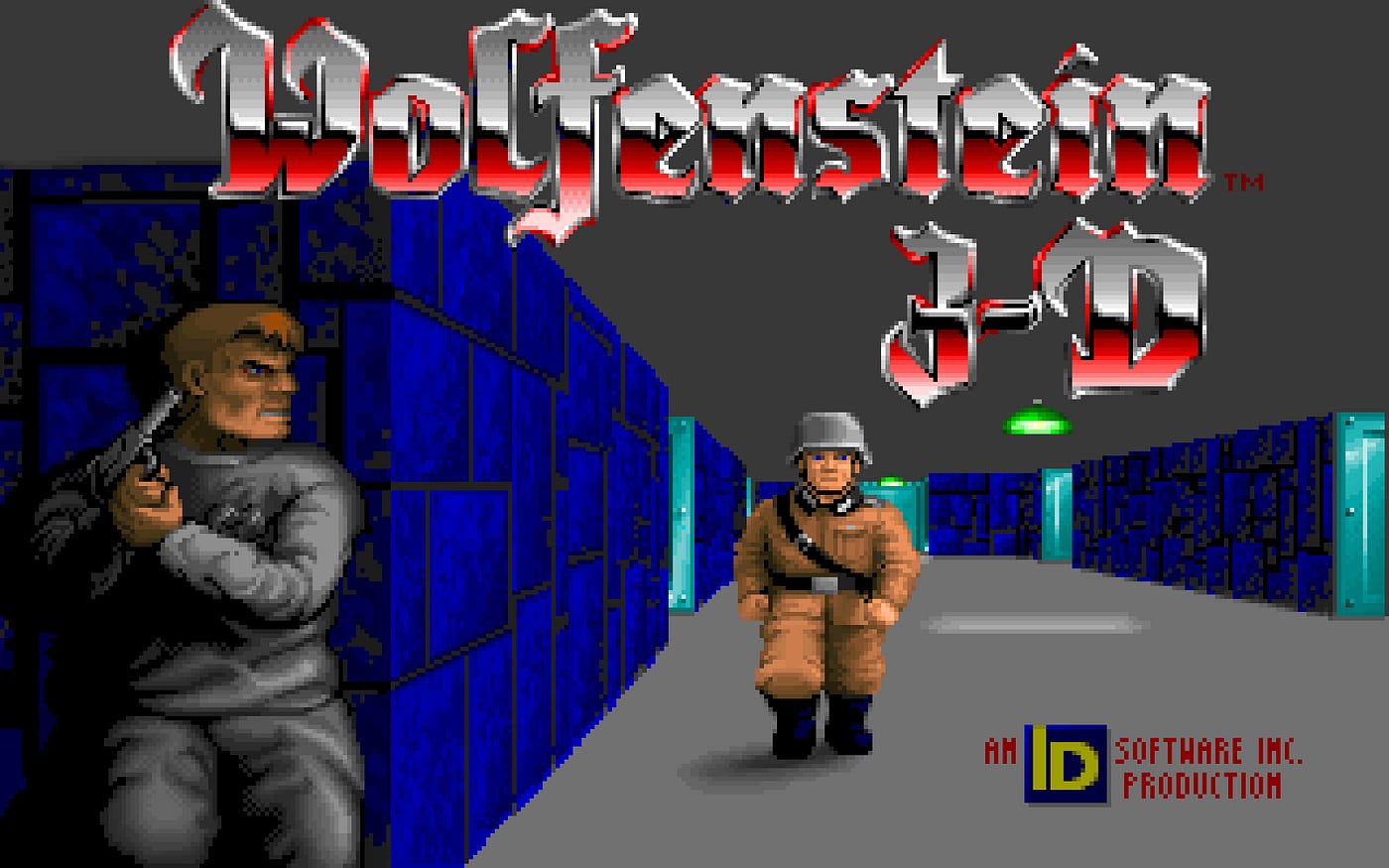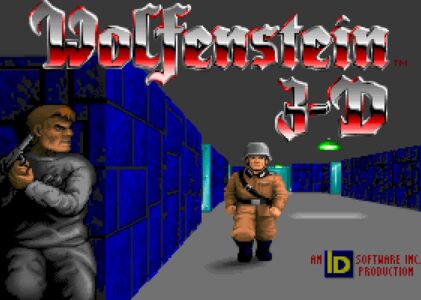In the annals of video game history, one title stands out as the pioneer of the first-person shooter (FPS) genre, inspiring a legacy of action-packed gameplay, strategic thinking, and endless hours of entertainment. That game is none other than “Wolfenstein 3D” – a groundbreaking masterpiece that carved its mark in the gaming universe.
In this comprehensive article, we will dive deep into the world of “Wolfenstein 3D.” We will explore its genre and the platforms it graced, dissect its gameplay mechanics, highlight key features that made it a sensation, discuss strategies for success, glance at critical reviews and its cultural impact, take a journey through its sequels, and even touch upon examples of similar games that followed in its wake.
The Birth of a Genre: FPS Unleashed
Before we delve into the intricacies of “Wolfenstein 3D,” it’s essential to understand its genre-defining nature. Released in 1992 by id Software, this game laid the foundation for the first-person shooter genre, as we know it today. FPS games thrust players into the action from a first-person perspective, immersing them in intense, fast-paced combat scenarios.

Platforms and Proliferation
“Wolfenstein 3D” was initially released for MS-DOS, a prominent operating system of the era. It was a game changer, providing an unprecedented level of graphical fidelity and interactivity. Due to its massive popularity, the game made its way to several other platforms, including:
- Atari Jaguar: In 1994, the game found a new home on the Atari Jaguar console, captivating console gamers with its revolutionary gameplay.
- Super Nintendo Entertainment System (SNES): In 1994, the SNES version of “Wolfenstein 3D” brought the Nazi-hunting adventure to Nintendo fans, albeit with some graphical and content limitations compared to the PC original.
- 3DO Interactive Multiplayer: The 3DO port in 1995 introduced a new audience to the thrill of taking down pixelated Nazis on a different platform.
- PlayStation Network and Xbox Live Arcade: In the digital age, both PlayStation and Xbox players had the chance to experience the game on their respective networks.
- Mobile Platforms: The game even found a home on mobile devices, reaching a new generation of gamers who could hunt Nazis on the go.
Immersive Gameplay: Navigating the Nazi Strongholds
“Wolfenstein 3D” introduced players to the role of William “B.J.” Blazkowicz, an American spy tasked with infiltrating Nazi strongholds, recovering stolen treasures, and eliminating high-ranking officers. The gameplay was a thrilling mix of exploration, combat, and puzzle-solving.

Key Gameplay Features
- First-Person Perspective: The game’s defining feature, the first-person perspective, allowed players to view the world through B.J.’s eyes, intensifying the immersion.
- Maze-Like Levels: Each level was a labyrinth of corridors, secret passages, and rooms, making navigation a challenge and encouraging exploration.
- Hunting Nazis: The game’s primary objective was clear – eliminate Nazis! Armed with a variety of weapons, players faced off against an array of enemy types, including grunts, officers, and even robotic foes.
- Treasure Hunt: In addition to the carnage, players needed to locate hidden treasures within each level, adding an extra layer of complexity.
- Boss Battles: Memorable boss fights against the likes of Mecha-Hitler pushed players to the limits of their skills.
- Secrets Galore: “Wolfenstein 3D” was famous for its hidden secrets, rewarding players who meticulously searched for hidden passages and items.
Strategies for Success
To survive the treacherous world of “Wolfenstein 3D,” players had to develop effective strategies. Here are some tried-and-true tactics:
- Conservation of Ammo: Ammunition was scarce, so players had to learn when to engage enemies and when to conserve bullets.
- Corner Play: Peeking around corners and utilizing cover was essential to minimize damage from enemy fire.
- Secret Hunting: Exploring every nook and cranny was not just for the completionists; it often revealed valuable supplies and shortcuts.
- Sound Awareness: Recognizing audio cues, such as footsteps, helped players anticipate enemy encounters.

Reviews and Cultural Impact
“Wolfenstein 3D” was a critical and commercial success, leaving an indelible mark on the gaming landscape.
Critical Acclaim
- PC Gamer Magazine hailed it as “a perfect example of shareware, with fast, exciting action, which makes it one of the best games ever.”
- IGN: In their retrospective review, they lauded the game for revolutionizing the industry, stating, “Wolfenstein 3D changed everything.”
- GameSpot: The site praised its “excellent graphics, sound, and level design” in their review.
Cultural Significance
“Wolfenstein 3D” also stirred controversy due to its subject matter, as players were tasked with eliminating Nazi enemies. Despite the controversy, the game played a significant role in popularizing FPS games. It paved the way for iconic titles like “Doom” and “Quake” and contributed to the growth of the modding community, with players creating custom levels and modifications.
Sequels and Evolution
The success of “Wolfenstein 3D” led to the creation of a series of sequels and spin-offs, each building upon the foundation laid by the original game.
Wolfenstein 3D: Spear of Destiny (1992)
“Spear of Destiny” was an expansion pack released the same year as the original game. It continued B.J. Blazkowicz’s adventures, featuring more levels, tougher enemies, and a quest to recover the Spear of Destiny.
Return to Castle Wolfenstein (2001)
This 2001 reboot of the series introduced a new generation of gamers to the world of Wolfenstein. It featured an enhanced story, modern graphics, and multiplayer modes, further cementing the franchise’s place in gaming history.
Wolfenstein (2009)
In this installment, players once again assumed the role of B.J. Blazkowicz, battling supernatural forces alongside the Nazi regime. The game received positive reviews for its narrative and gameplay.
Wolfenstein: The New Order (2014)
“The New Order” reimagined the series with an alternate history narrative where the Nazis won World War II. The game received critical acclaim for its storytelling, character development, and gameplay mechanics.
Wolfenstein II: The New Colossus (2017)
This sequel to “The New Order” continued the story of Blazkowicz as he led a resistance against the Nazi regime in an alternate 1960s America. It was praised for its narrative depth and character-driven storytelling.
The Legacy Lives On: Similar Games
The impact of “Wolfenstein 3D” on the gaming industry is immeasurable, inspiring countless developers to create their own FPS titles. Here are a few notable examples:
Doom (1993)
Created by id Software, the same studio behind “Wolfenstein 3D,” “Doom” refined and expanded upon the FPS formula. It became a seminal title in the genre, known for its fast-paced action and iconic weapons.
Duke Nukem 3D (1996)
“Duke Nukem 3D” blended FPS gameplay with humor and interactivity, offering a unique take on the genre that resonated with players.
Half-Life (1998)
Valve’s “Half-Life” introduced a narrative-driven approach to FPS gaming, combining storytelling with immersive gameplay.
Call of Duty Series (2003-present)
The “Call of Duty” franchise has become a juggernaut in the FPS genre, offering both intense single-player campaigns and addictive multiplayer modes.
BioShock (2007)
“Bioshock” combined FPS elements with a thought-provoking narrative set in the dystopian underwater city of Rapture.
In conclusion, “Wolfenstein 3D” is not just a game; it’s a piece of gaming history. Its impact on the FPS genre, the gaming industry, and popular culture cannot be overstated. From its humble MS-DOS beginnings to its evolution into a modern gaming franchise, “Wolfenstein 3D” has left an enduring legacy that continues to inspire gamers and game developers alike.
So, whether you’re a seasoned Nazi-hunter or a newcomer to the world of first-person shooters, remember that “Wolfenstein 3D” is where it all began, and its influence can be seen in every corner of the gaming world today.













